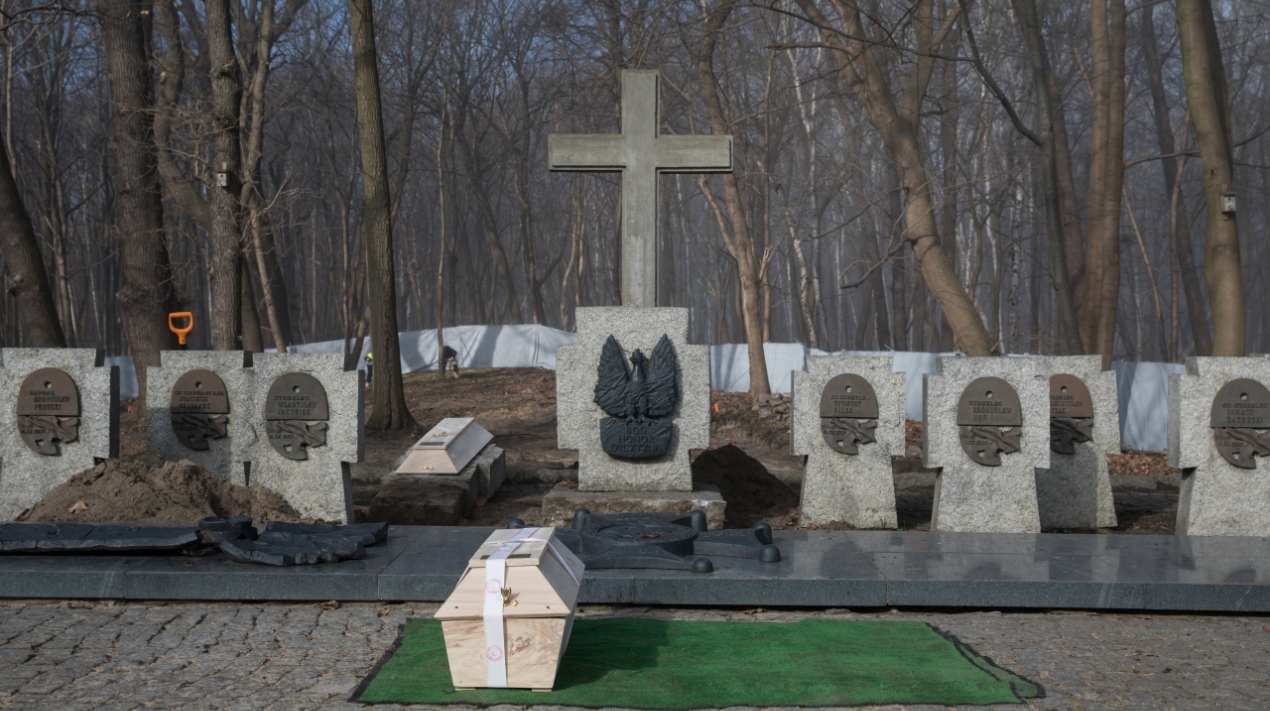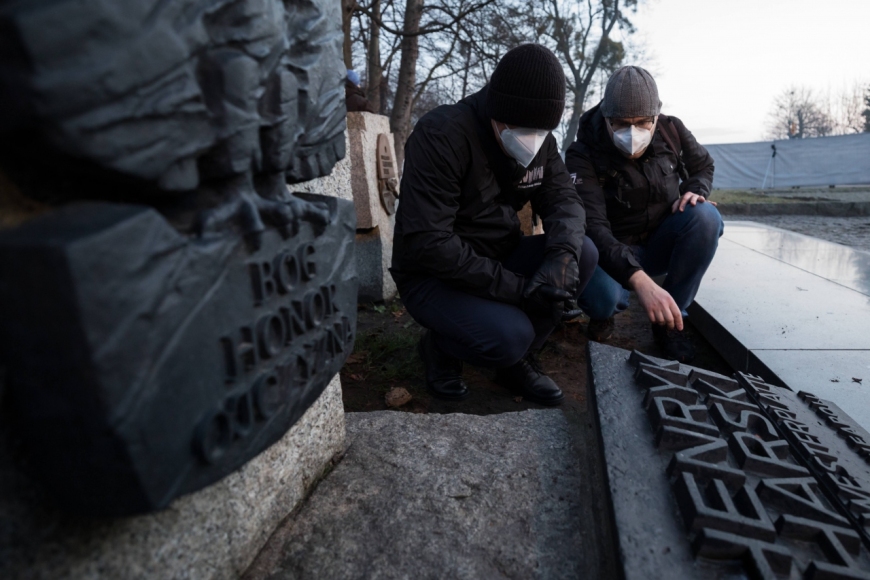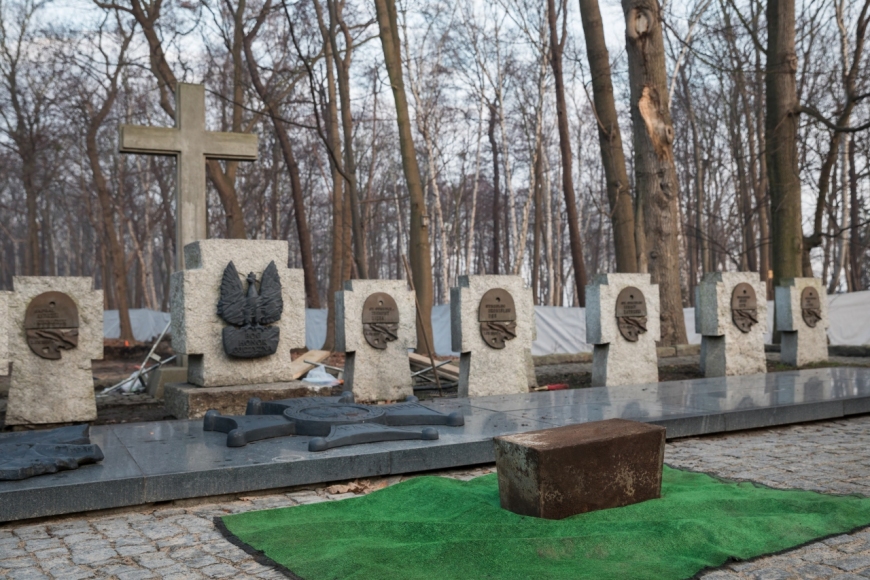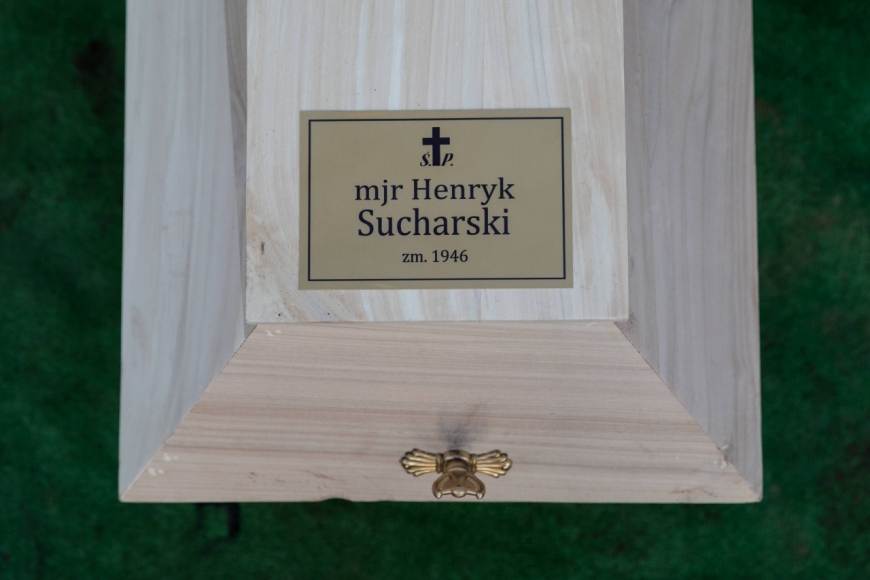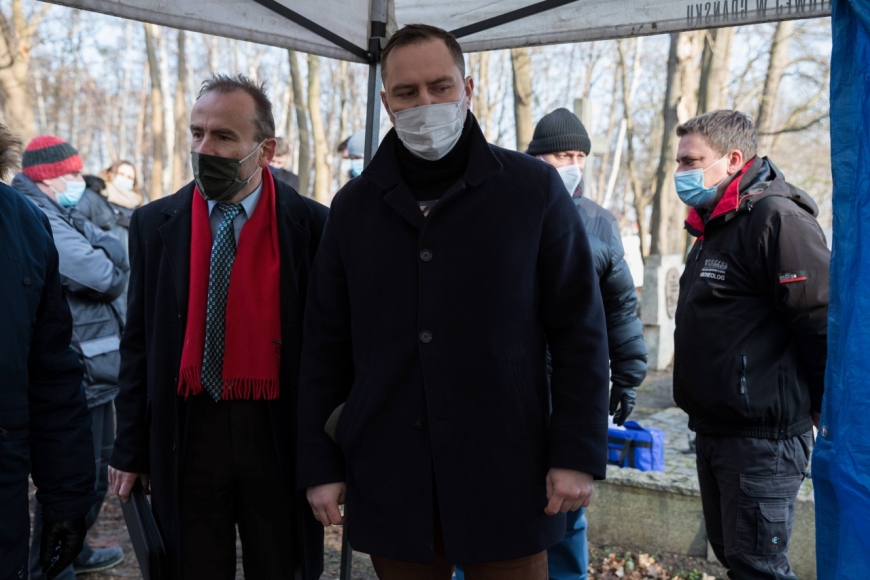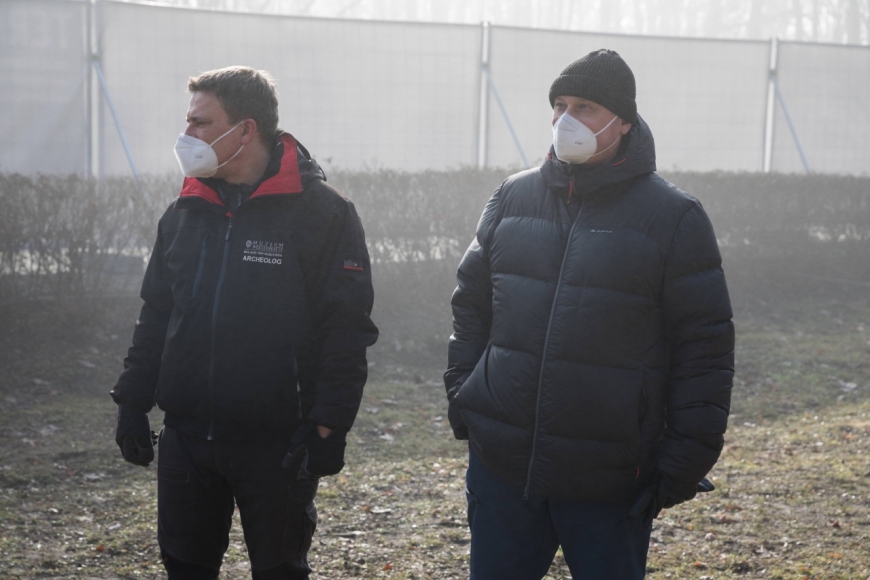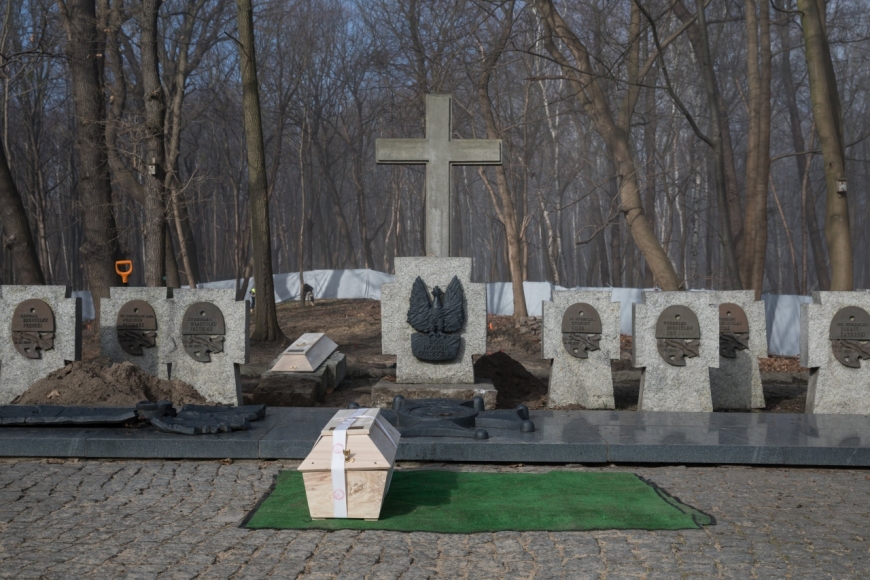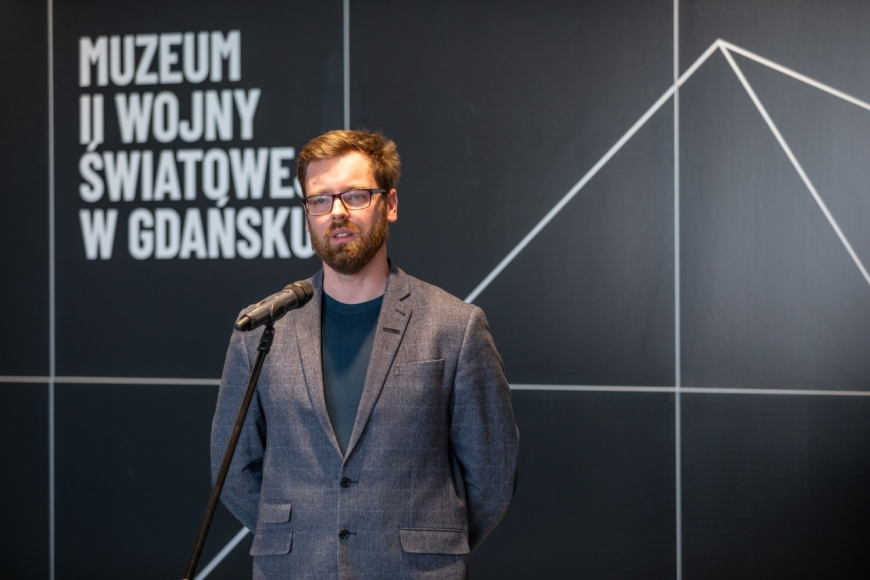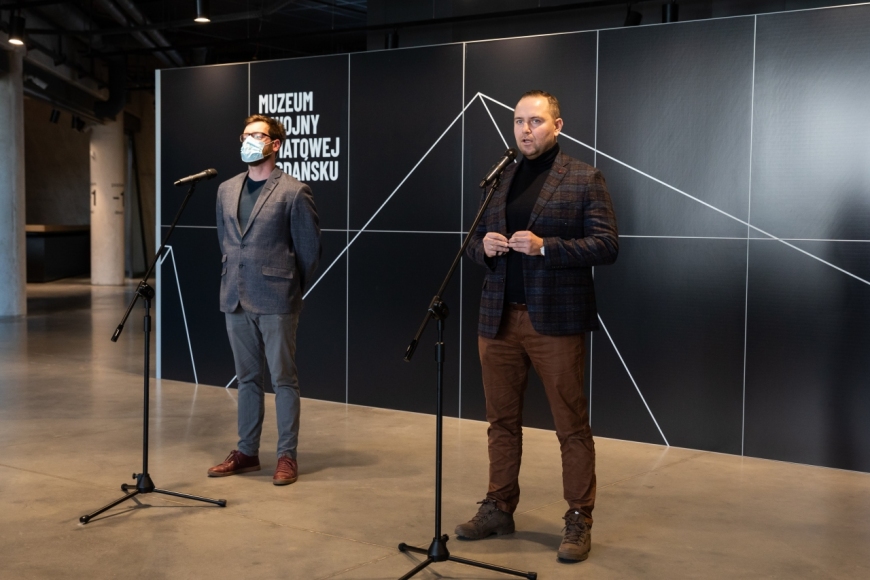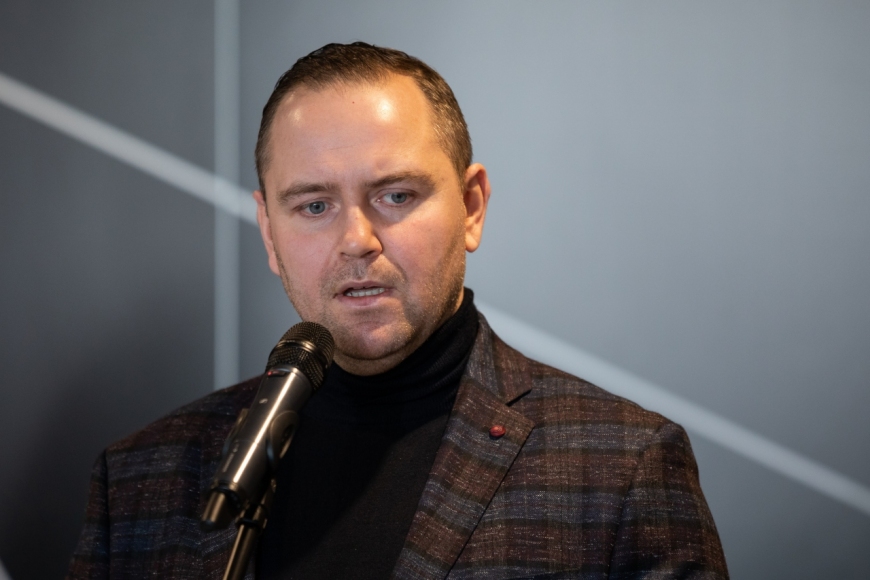Unexpected results from the exhumation carried out at Westerplatte by the Museum of the Second World War in Gdańsk
On March 16th of this year, in the early morning hours, the Museum of the Second World War in Gdańsk started an exhumation of remains buried at the Cemetery of the Defenders of Westerplatte. The decision to carry out the work was made by the County Sanitary Inspector, the Pomeranian Voivode and the President of the Institute of National Remembrance after consent was received from the family of Major Henryk Sucharski.
Present during the exhumation were the following people: the director of the Museum of the Second World War in Gdańsk, Dr. Karol Nawrocki, the Pomeranian Provincial Conservator of Monuments, Eng. arch. Igor Strzok, IPN Prosecutor Tomasz Jankowski, dr hab. Andrzej Ossowski from the Pomeranian Medical University, as well as representatives of the Pomeranian Regional Branch of the Polish Red Cross and the County State Sanitary Inspector in Gdańsk. The exhumation works were overseen by Filip Kuczma - head of the Archaeological Department of the Museum of the Second World War in Gdańsk.
Exhumation of the remains of Major Henryk Sucharski
The exhumation work began at 6:10 am. From under the centrally placed cross of Major Henryk Sucharski, a metal tombstone was removed, under which there was a burial recess made of concrete, with internal dimensions of 64 x 38 cm and a depth of 35 cm. Directly under the tombstone there was a layer of earth covering a rectangular metal coffin set below, with dimensions of 57.5 x 27.5 cm. In cross-section, the coffin was trapezoidal, tapering downwards, 23.5 cm wide at the bottom, and 26.5 cm high. The coffin was taken out of the recess and (without opening it) put into a prepared wooden coffin, which was sealed and transported to the church of St. Bridget in Gdańsk.
Exhumation of the remains under the cross of Cpl. Andrzej Kowalczyk
Work began on the grave of Corporal Andrzej Kowalczyk at 6:38 am, removing the stone cross located there. After the cross was moved, the outline of a rectangular concrete recess with internal dimensions of 118 x 84 cm was revealed, in which the outline of a decayed wooden coffin and the remains of funeral ribbons and wreaths were visible. Fortunately, on the western side of the recess, a metal plate was revealed with an engraved inscription:
R.I.P.
CORPORAL ANDRZEJ KOWALCZYK
BORN - 27.11.1914 - KIETLIN
DIED - 01.09.1939 - WESTERPLATTE
After the official inspection was completed, the remains of the coffin were cleaned, which was in the shape of a rectangle with dimensions 90 cm x 40 cm. The coffin was almost completely destroyed by age. After removing a layer of decay inside the outline of the coffin, a white plastic bag with dimensions 70 cm x 30 cm containing human remains was uncovered. During inspection of the excavated remains supposedly belonging to Corporal Andrzej Kowalczyk, typical military equipment from a German soldier was revealed. This included fragments of a leather belt with a buckle and pouches (signed with the manufacturer's name and the date of manufacture - 1937), a mess tin, the remains of two leather shoes of German design, a fragment of the leather lining of a German helmet (with a signature) and a metal button and buckle, as well as part of a plastic comb. Due to legitimate doubts as to the identity of the exhumed soldier, it was decided to conduct further specialized tests for genetic identification. These will be carried out by the Department of Forensic Genetics at the Pomeranian Medical University in Szczecin. The remains found at the site will also be investigated by researchers from the Archaeological Department of the Museum of the Second World War in Gdańsk.
Press Conference
On the day of the exhumation, at noon, an urgent press conference was called at the Museum of the Second World War, during which the results of the exhumation works were shared with the public. The press conference was attended by the director of the Museum of the Second World War in Gdańsk, Dr. Karol Nawrocki, who talked about the course and the results of the exhumation works, and Wojciech Samól - curator of the Research and Education Department at the Museum of the Second World War - who has dealt with Westerplatte for many years, and who presented the aims of the works being carried out as well as the history of Maj. Henryk Sucharski and Cpr. Andrzej Kowalczyk.
The director of the Museum of the Second World War, Dr. Karol Nawrocki said:
„We can see how many secrets there are still around Westerplatte, by the many myths that still exist to this day. Today is another day when we realise how greatly important the archaeological mission to Westerplatte is, not only because we have found the Polish heroes of Westerplatte from 1939 there, but also German soldiers have been discovered in the graves of Polish heroes – just one of the historical curiosities that have been occuring on the Westerplatte Peninsula for decades. Curiosities which are now being systematized by the work of an official state cultural institution.”
The exhumation works, dismantling of the current cemetery, as well as other archaeological research are part of the pre-investment activities being carried out as part of the construction of the new Military Cemetery of the Polish Army Soldier at Westerplatte. The elements of the current cemetery will be dismantled and partly deposited in the warehouses of the Museum of the Second World War in Gdańsk, and also at the archaeological base at Westerplatte. Particular care will be taken of the historic crosses, which will be cleaned and subjected to conservation, and then temporarily relocated in the vicinity of the nearby pedestrian path leading to the Monument to the Coastal Defenders for the duration of the investment. The construction of the cemetery is one of the most basic works to be completed during the first stage of the investment - the construction of the open-air Museum of Westerplatte and the War of 1939, which is a branch of the Museum of the Second World War in Gdańsk.
Major Henryk Sucharski (1898 - 1946)
Commander of the Westerplatte unit
Born on November 12th, 1898 in Gręboszów, the fourth child of Stanisław and Agnieszka, née Bojko, in a large, poor family. He finished his early education in February 1917, when he was called up to undertake military service in the Austrian army. In the fall of 1917, while in military service, he received the so-called military high school diploma and was able to enrol on a course for reserve officers. As early as 1918 he was sent to the Italian front, where he fell ill with malaria within a few months. After returning to the reborn Republic of Poland, he was immediately drafted into the army and sent to the Czech front. He was quickly promoted and was transferred to the Lithuanian-Belarusian front. By the fall of 1921 he had received even more promotions, including that of a non-commissioned officer. His special courage and merits were awarded by, among others, the Virtuti Militari Cross, 5th class. In 1922, he began a series of specialist training courses as part of his military training. After these ended in 1928, he was promoted to the rank of captain and joined the Staff of Infantry Officers. In 1930, Captain Sucharski was transferred to the 35th Infantry Regiment. In 1936, he graduated from the 12th level course for intelligence officers - as part of the so-called Branch II - also completing further training courses in Rembertów at the same time. In the spring of 1938 he was promoted to the rank of Major. At the beginning of December, he was appointed Commander of the Military Transit Depot (WST) at Westerplatte. From March 1939, with the occupation of Klaipeda by the Germans, he intensified work on increasing the defenses of his base and strengthening the number of the WST personnel. The defensive work he undertook contributed significantly to the ability to defend the Westerplatte outpost for a full 7 days in September 1939. As Commander, he personally met the Germans to discuss the terms of the surrender of the Polish post. In recognition of the steadfast fighting spirit of the Westerplatte unit, the Major was allowed to surrender with his saber at his side, although the weapon was taken from him immediately after he entered the first POW camp.
He stayed in as many as six POW camps throughout the war, being relatively often relocated. In March 1945 he had an accident during an evacuation. After liberation, in July 1945, he was given command of the 2nd Polish Corps in Italy. In January 1946, he was appointed Commander of the 6th Carpathian Rifle Battalion. On August 19th of the same year, he was taken to a military hospital in Naples, where he died on August 30th, 1946. He was buried on September 1st, 1946 at the Polish Military Cemetery in Casamassima, Italy.
In August 1971, the remains of Major Henryk Sucharski were exhumed and transported to Poland, and on September 1st, 1971, his coffin - decorated with the Commander's Cross of the Virtuti Militari War Order - was placed in the central part of the Westerplatte Defenders Cemetery.
Corporal Andrzej Kowalczyk (1914 - 1939)
Born on November 27th, 1914 in Kietlin, in Radomsko county, in the region of Lodz, son of Antoni and Wiktoria née Barankiewicz. He served in the 85th Infantry Regiment in Nowa Wilejka. From August 13th, 1939 he served at Westerplatte and on the orders of the Commander of the WST, he was given command of the medical facility on the 1st of September. With the start of hostilities on September 1st, 1939, he took part in strengthening the facility known as "Prom". He was killed on the first day of fighting. In 1945, he was posthumously awarded the 5th Class Virtuti Militari Cross. Until the exhumation on March 16th, 2021 by the Museum of the Second World War in Gdańsk, it was believed that his remains had been found during earthworks carried out on the Westerplatte peninsula in 1963, several dozen meters from Guardhouse No. 1. His remains had been allegedly identified by Westerplattte residents due to some Polish equipment and a harmonica found alongside them. The discovered remains were then buried at the Srebrzysko Central Cemetery in Gdańsk. On September 1st, 1992, the alleged remains of Corporal Andrzej Kowalczyk were transferred and solemnly buried at the Cemetery of the Defenders of Westerplatte. However, during examination of excavated remains, carried out during the exhumation works by the Museum of the Second World War in Gdańsk, it was found that the remains supposed to belong to Corporal Andrzej Kowalczyk had the typical military equipment of a German soldier. Due to legitimate doubts as to the identity of the exhumed soldier, a decision was made to conduct specialized genetic tests for identification, as well as to commence further investigation into the whereabouts of this Polish Defender of Westerplatte.












